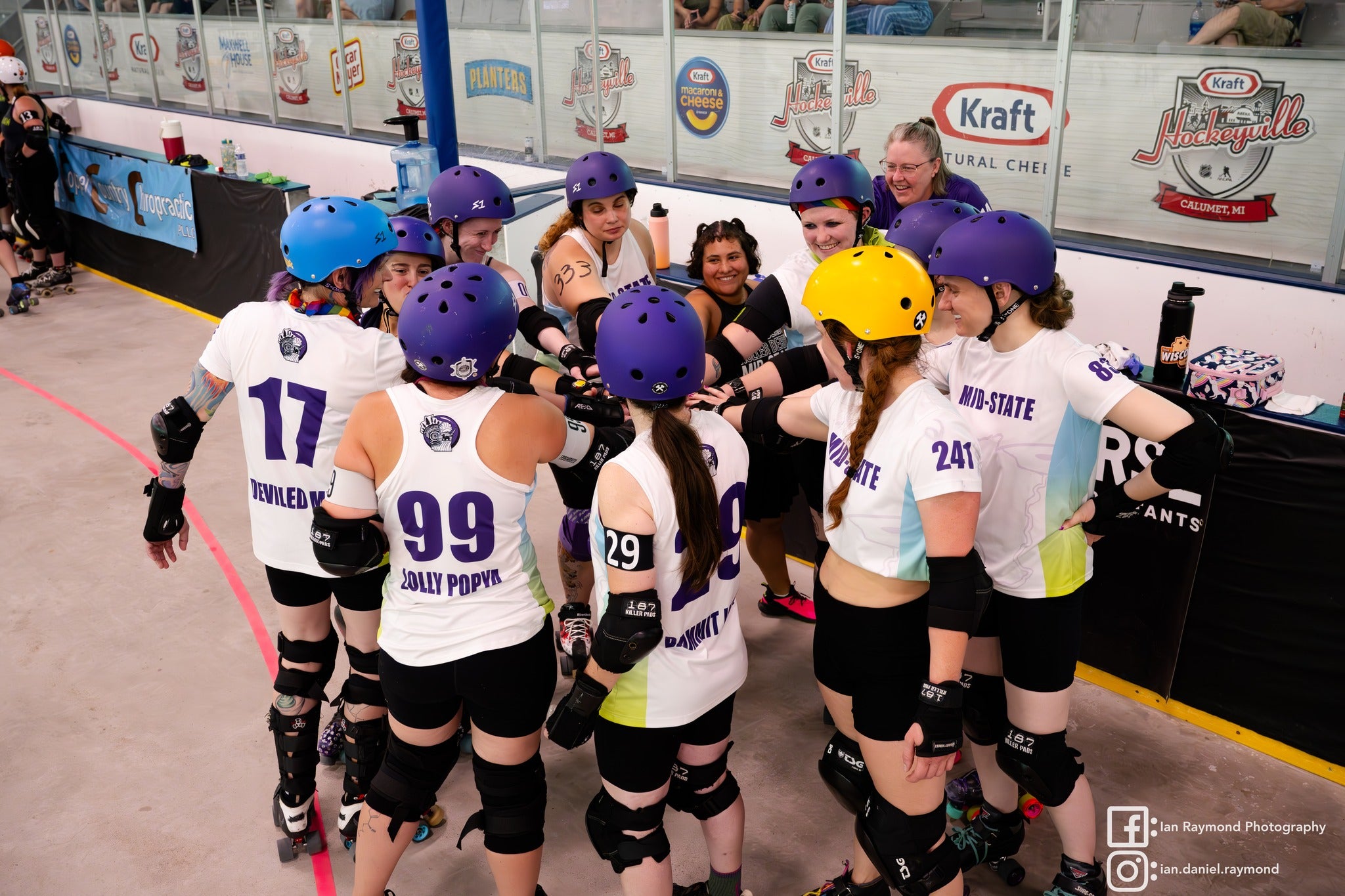On a beautiful, cold day in early February, people on the frozen surface of Lake Mendota watch as athletes on sleds, skis, and foot-high skates carve around the ice, propelled by kites and sails.
Onlookers describe the sight as “amazing” and “colorful.” Others say they might want to give it a try themselves.
They’re catching the tail end of the 2025 World Ice and Snow Sailing Championships, a weeklong gathering of the best athletes in the sport. Put on by the World Ice and Snow Sailing Association and the International Kiteboarding Association, the event featured more than 70 athletes from 10 different countries this year.
Stay informed on the latest news
Sign up for WPR’s email newsletter.
“The majority of competitors are international competitors here to basically show off the sports for people in Madison,” said Tom Fredericks, a competitor from Anchorage, Alaska.
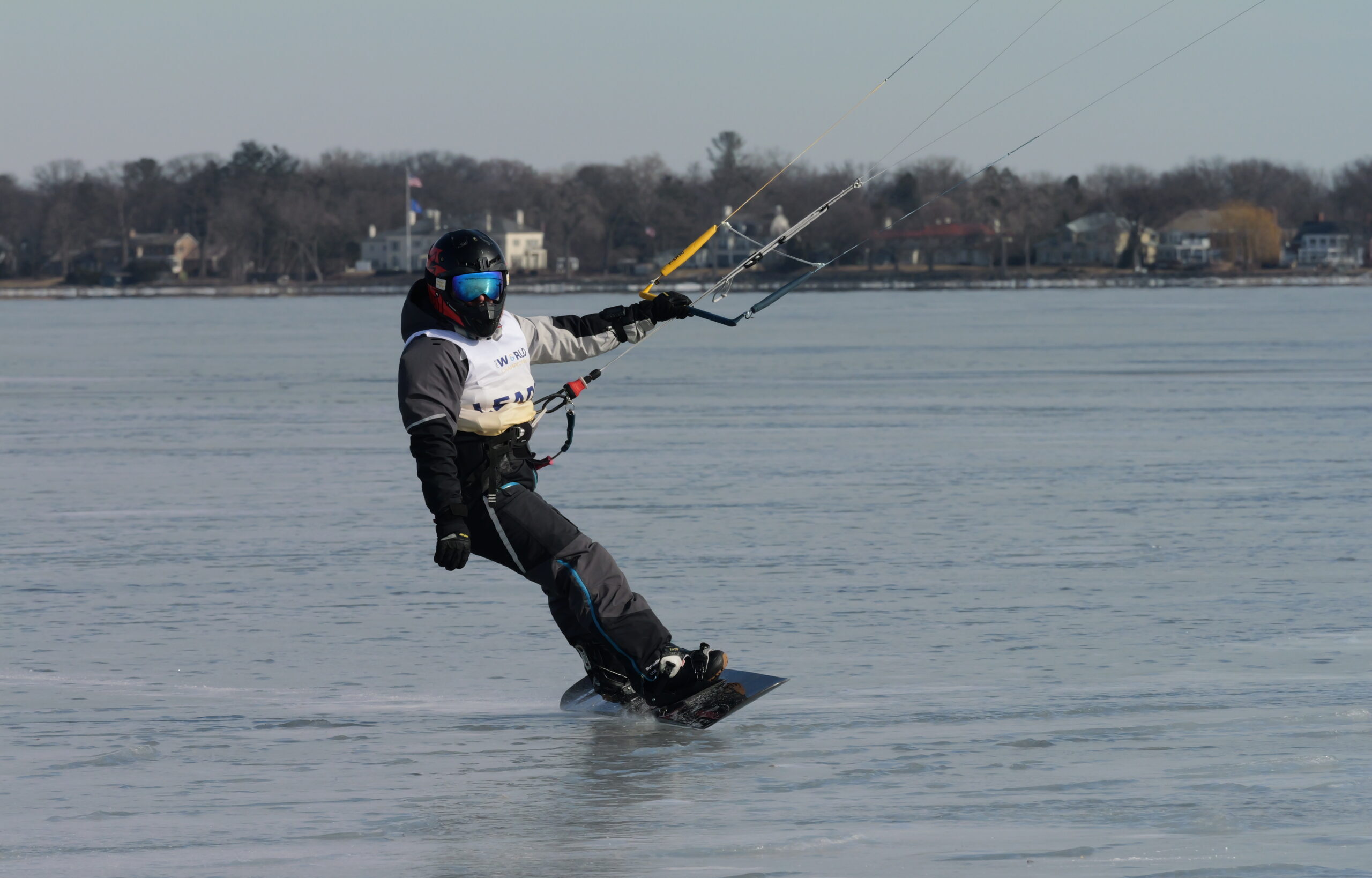
Ice and snow sailing actually involves three different sports, or “classes.” All of them involve harnessing the wind to power a rider across the surface of a frozen lake.
The open class, also known as, “sails” or “sleds,” is similar to windsurfing on the water. Riders stand on a sled with blades on the bottom and use an attached sail to get around.
In the wing class, or “wingfoiling,” athletes catch the wind with a rigid or inflatable wing they hold with their arms. While some ride on skis and traditional ice skates, many elite riders opt for skates with extremely tall blades and ski-like bindings.
Finally, the kite class has racers on skis or snowboards using huge kites attached by strings to pull them around the ice. The sound of their boards and skis carving on the ice sound like jet engines.
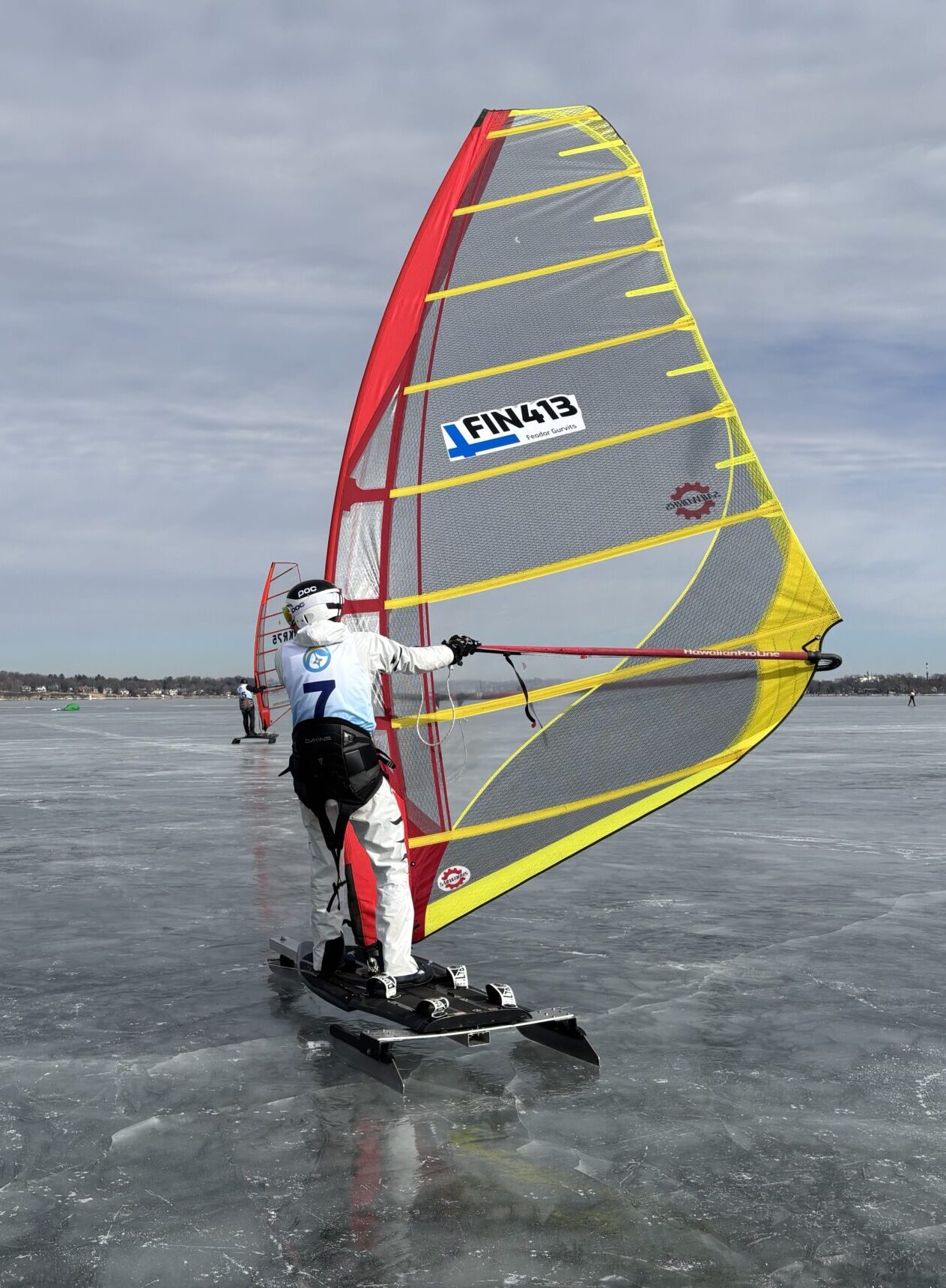
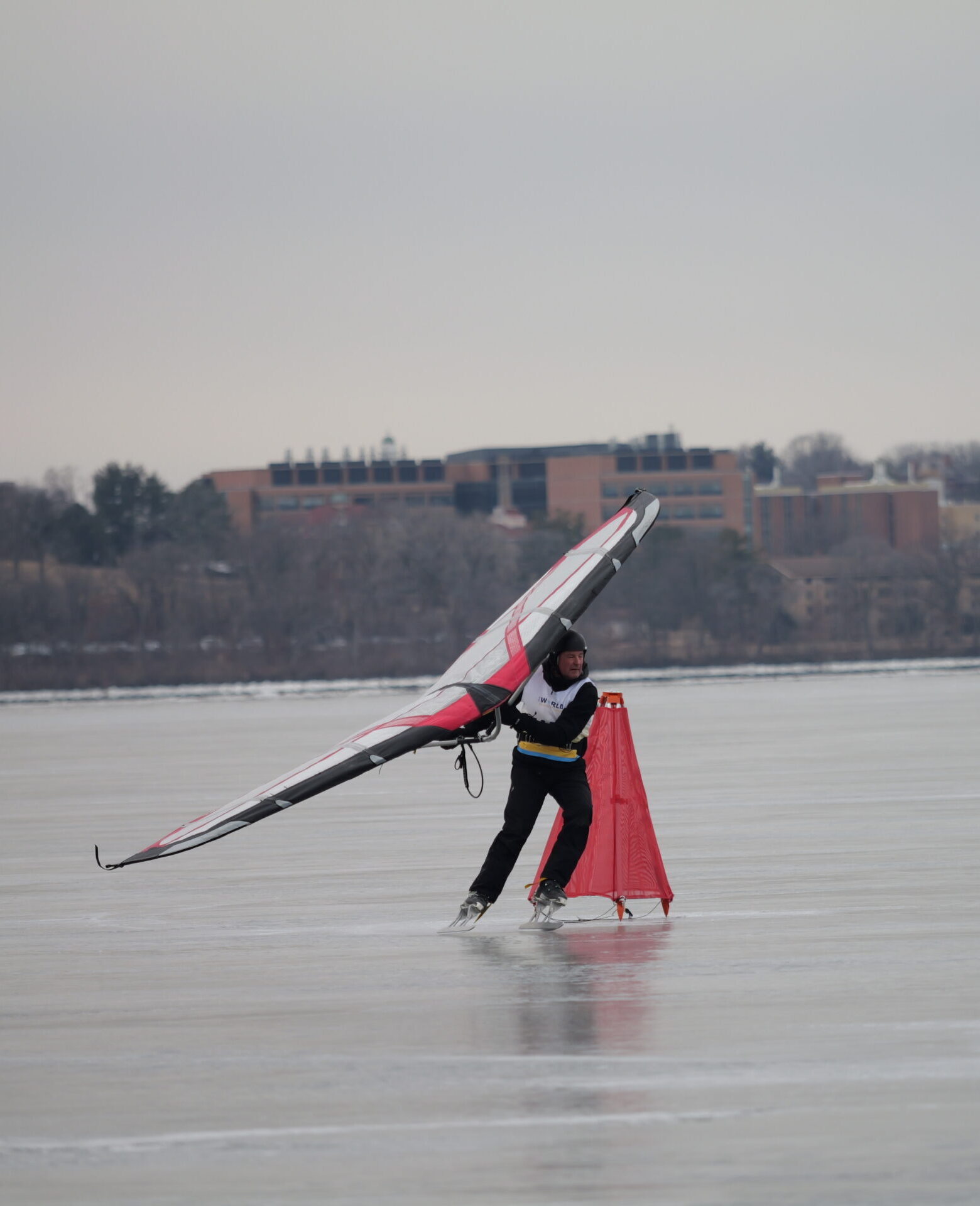
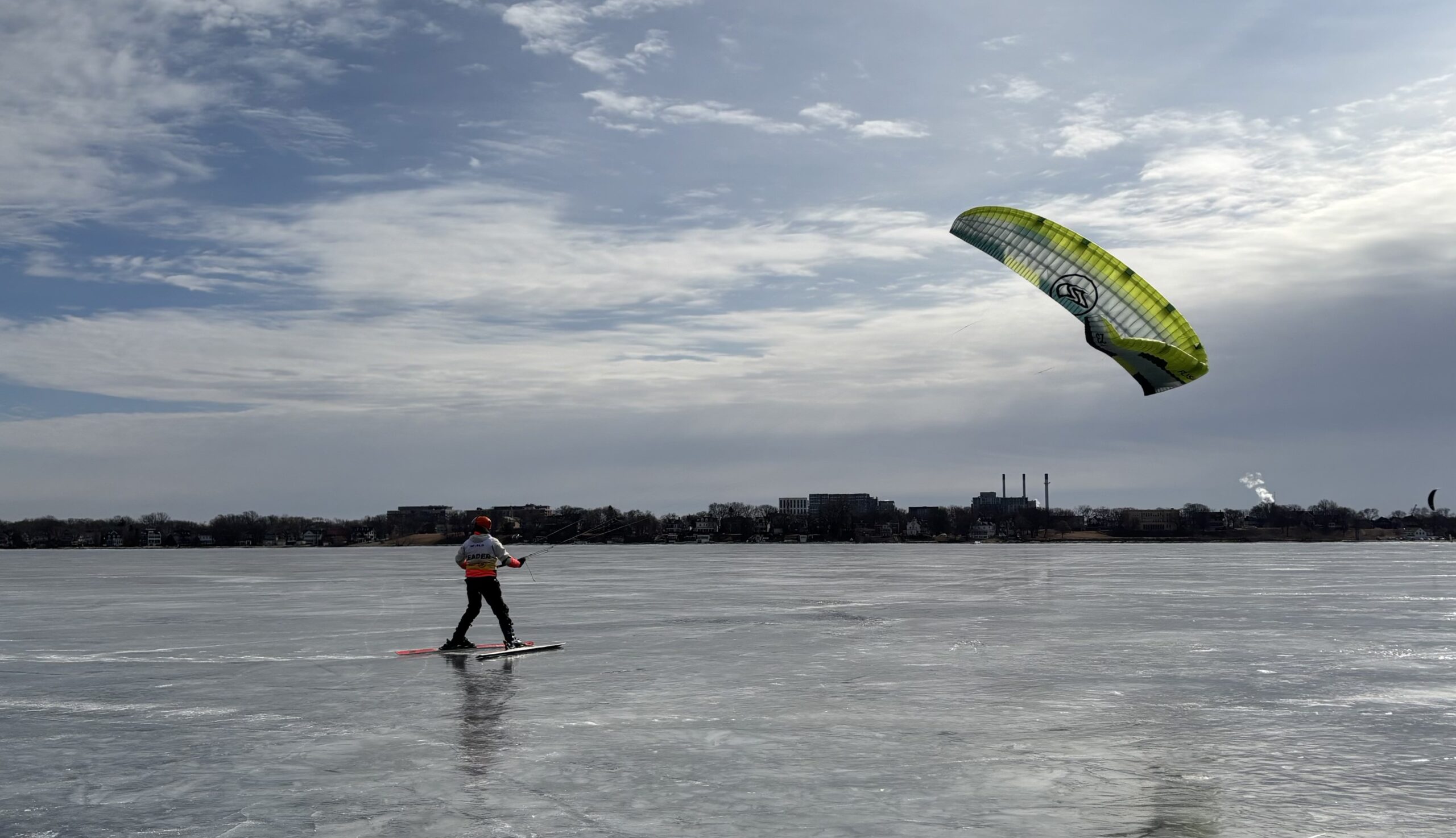
Top left: Germany’s Boris Winterhoff rides a sled with a sail. Beatrice Lawrence/WPR. Top right: Using a wing and skates, Lars Fromell of Sweden rounds a marker during a course race. Photo courtesy Liam Brinton. Bottom: Ranno Rumm of Estonia gets his kite in the air. Beatrice Lawrence/WPR
What the three sports have in common: the feeling of freedom.
“It’s the closest thing I could think of to flying. It’s a feeling like no other,” said Annie Tuthill of Rhode Island, who was the 2024 Women’s World Wing Sailing Champion in multiple events. “I think all these crazy wind people, all we’re doing is chasing that feeling.”
During a week of competition, some of that freedom is sacrificed for a shot at the world title. Instead, athletes race on courses of different lengths and formats.
Course officials and event volunteers explained course racing to me while I watched from the starting line for WPR’s “Wisconsin Today.” It’s similar to racing sailboats.
“They’ll blast a horn and they’ll say three minutes, two minutes, one minute, 30 seconds, and then the last blast is when you can cross the line,” said David Wilde, a local volunteer. “So there’s all this jockeying for position.”
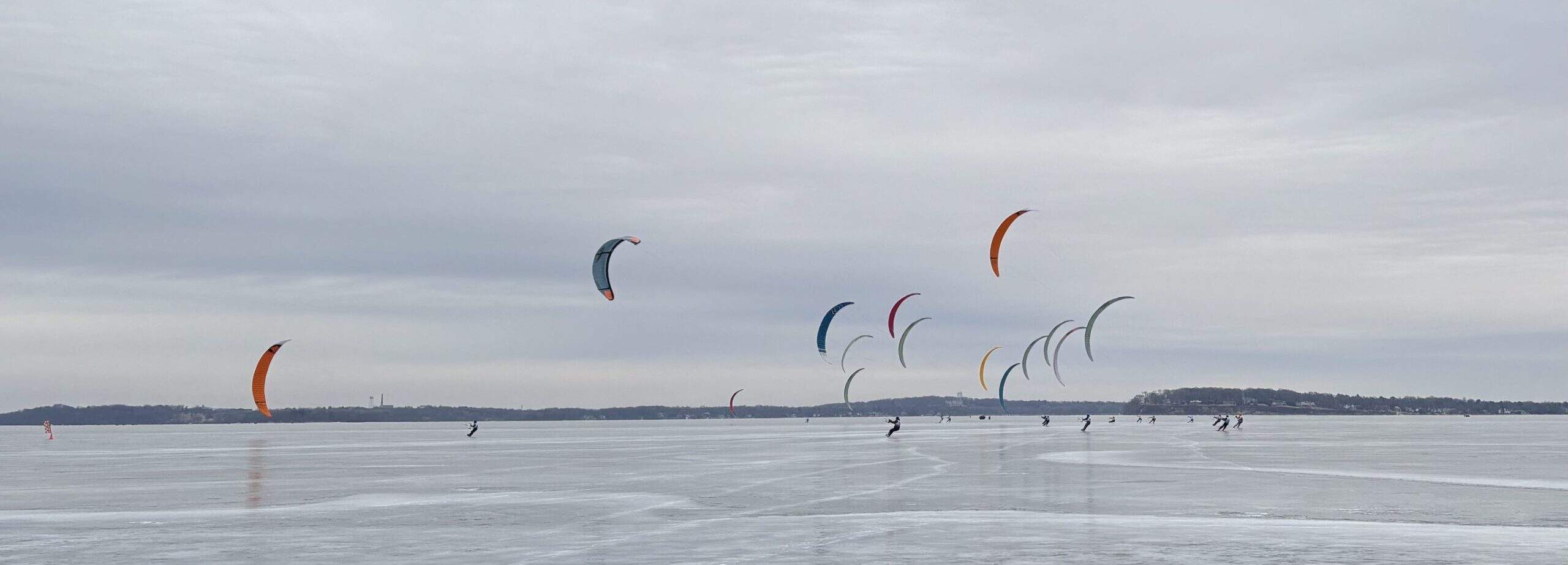
“So they go up to mark one, then they go counterclockwise to mark two. It’s basically one big square,” said Markus Schwendtner with the International Kiteboarding Association.
When they finish, they fly by and yell their bib number in case officials can’t catch it in time.
From the outside, it looks graceful, even beautiful. Marina Psychogyiou with the International Kiteboarding Association says it best.
“It is like dancing. It is slow and harmonious, the movement,” Psychogyiou said.
It’s a little different from the perspective of the racers. During a course race, local elite racer Steve Cohan grunts and struggles as he fights to control his kite, and yells at his competitors to avoid crashes and tangles.
“When that happens, it’s pretty bad, because both kites fall out of the sky, and then everybody that is near you also has to get out of the way. It’s like a bicycle crash,” Cohan said.
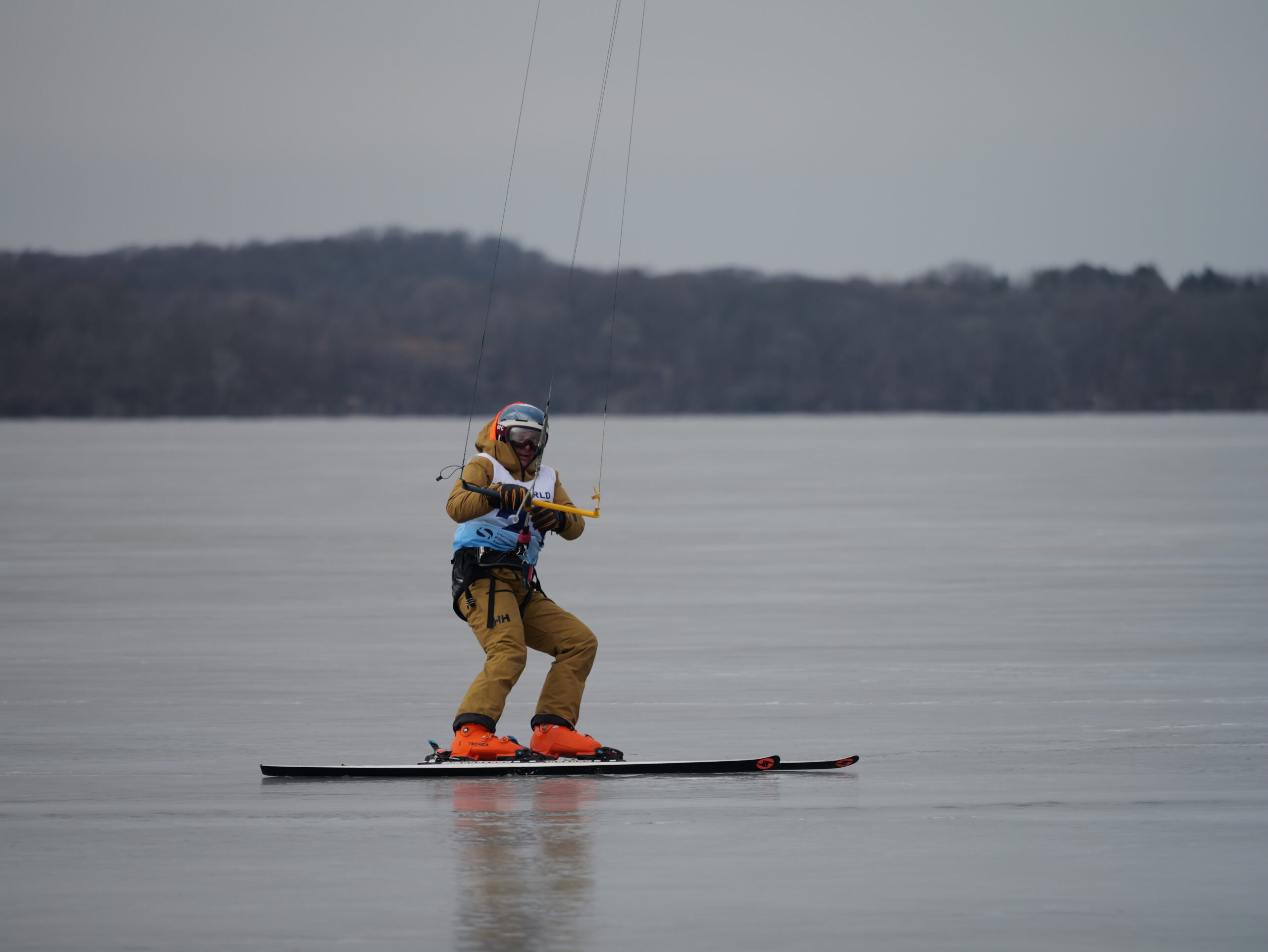
Cohan also helped organize the event this year, and he’s a big reason why it ended up being held in Madison.
“We’ve got a very vibrant community of people that wing and kite and do lots of things on the lake,” Cohan said. “(And) we have a real city here in Madison. The other places we’ve been to over the last few years, we find ourselves going to small villages in the middle of nowhere to have this event.”
Plus, the lakes, with glare ice and no snow, were just right for high speeds this year.
“It’s really fast conditions here,” Cohan said.
The event has been in Madison before, back in 1995. Annie Tuthill, one of this year’s top competitors, was there. But she wasn’t able to participate just yet.
Annie’s dad, Will, is the president of the World Ice and Snow Sailing association. He and Annie’s mother, Kim, brought her with them to the championships when she was just 10 months old.
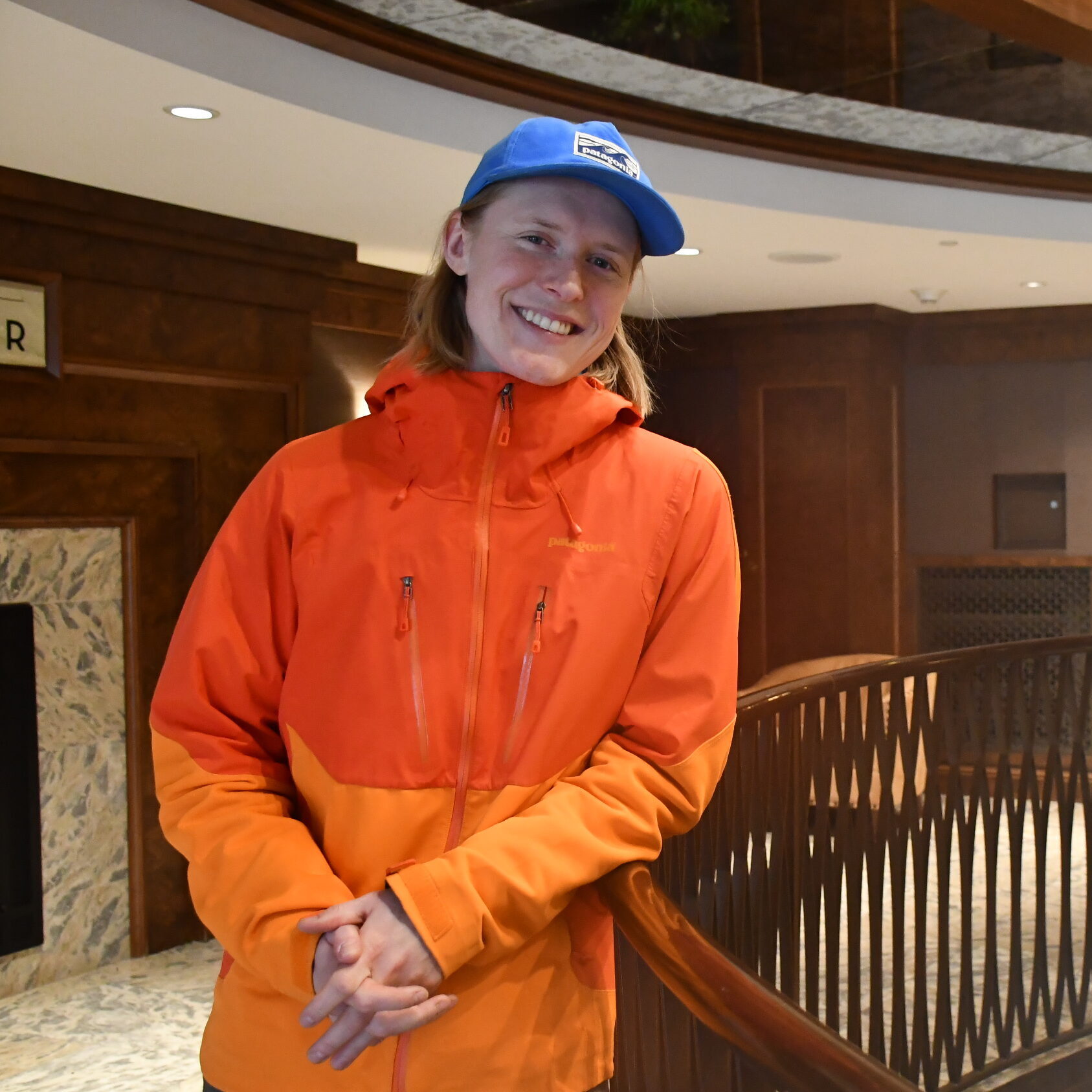
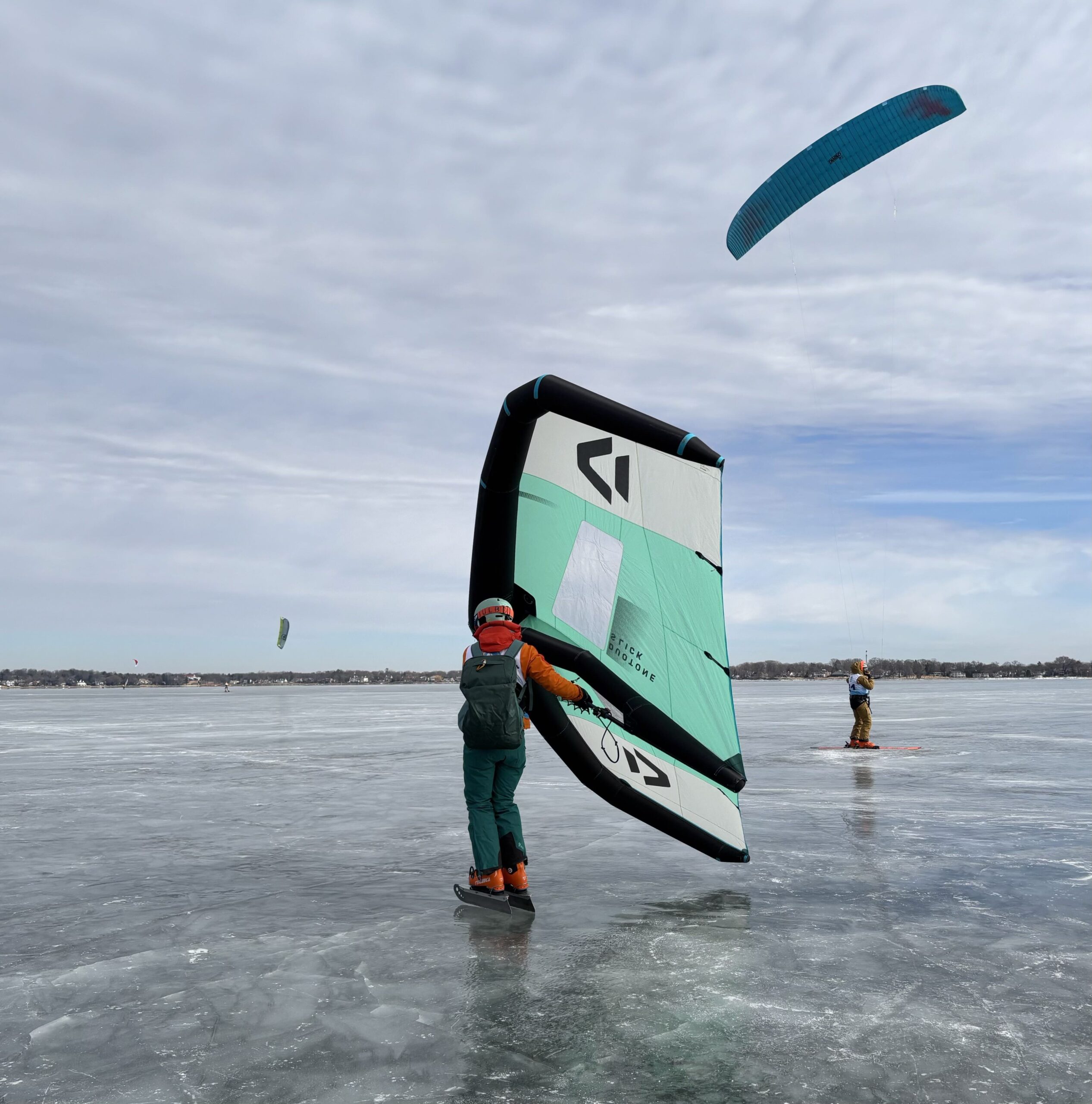
Annie Tuthill of Rhode Island uses a wing and skates to get around the ice. She was the 2024 Women’s World Wing Sailing Champion in multiple events. Left: Beatrice Lawrence/WPR. Right: Mackenzie Krumme/WPR
“I grew up doing this. I’ve been doing this for half of my life. [At[ age 13, [I was] given a sail for Christmas,” Annie Tuthill said. “It’s honestly more like family, because you see the same people every year.”
It’s a far-flung but close-knit community, where the sport’s world class athletes are happy to mingle with complete beginners.
Buff Wednt from California had been wing sailing for only three days when I talked to her at a bar crawl during the event.
“I was like a baby giraffe the first day … People gave me advice on my skates and how to stand,” Wendt said. “The community is so welcoming, and they’re so great with beginners.”
When they had some down time, elite racers were out helping newer riders with techniques and equipment. Elite wing racer Bianka Micke was outfitting local racer Courtney Kaiser with extremely tall ice skates, at least 8 inches high.
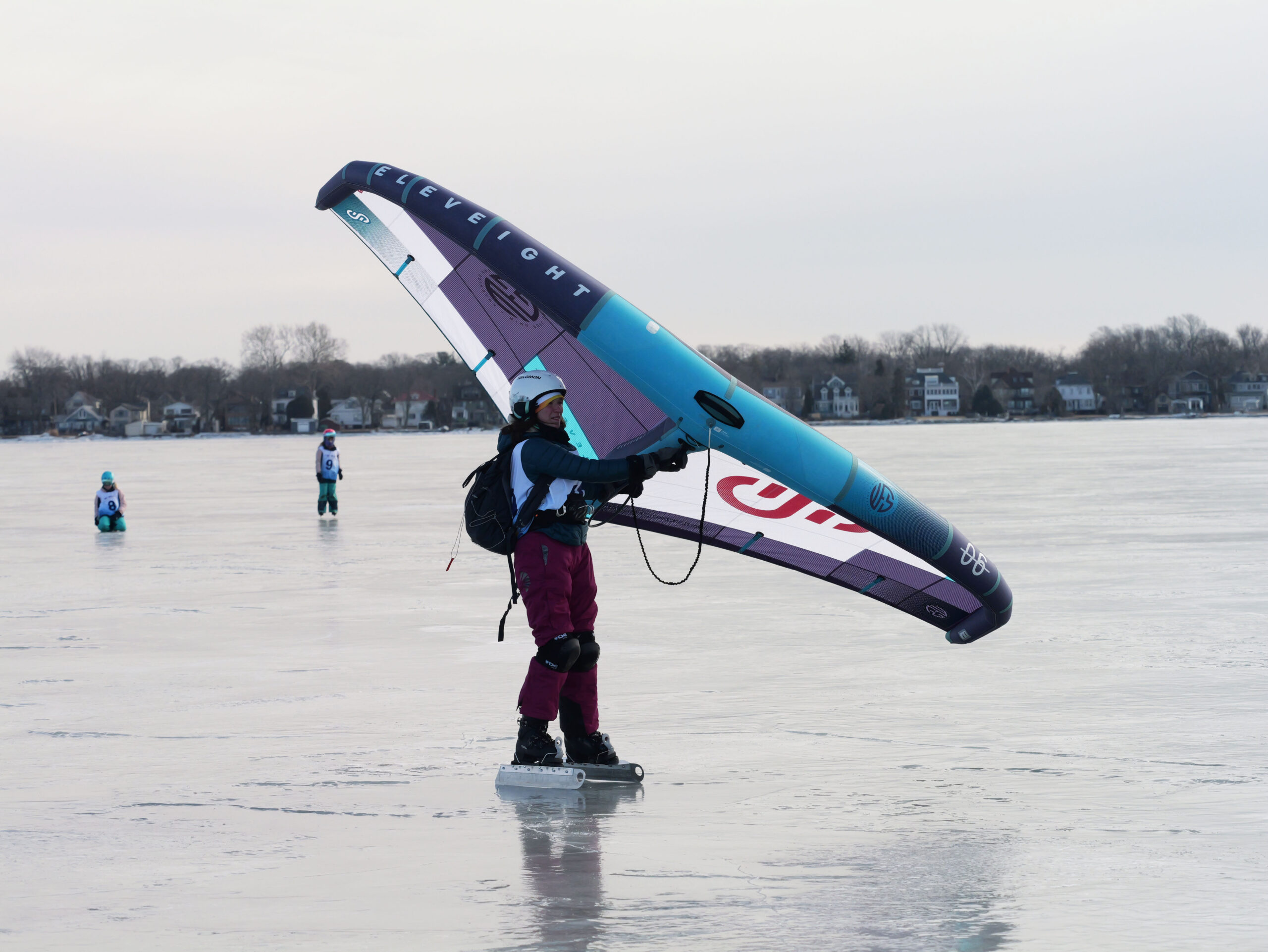
“I’m just recreational, so I’m learning a lot,” Kaiser said. “I’m just soaking it all in. There’s a lot to wrap your head around.”
By the end of the week, Bianka had claimed the women’s world title in course racing. But she still took the time to teach Courtney one-on-one.
It’s something that was encouraged by Cohan and the others that ran the event.
“Let’s give them the opportunity to mingle with us and share our techniques and our tricks and talk about our experiences, and give these recreational people a good feeling about the sport,” Cohan said at a morning skipper meeting. “Remember, that’s our next generation of people here.”
The athletes were excited to share their love for the sport with others, including those who had never even seen the equipment before.
Why not now?
I found that out the fun way while talking with Finland’s Feodor Gurvits, who races on a sled with a sail. When I made a passing comment about wanting to try it sometime, he said, “Why not now?”
The next thing I knew, I was learning how to sail across the ice. It was thrilling, and I must have been going less than 5 miles per hour. For reference, Quebec’s Christian Labbe hit a top speed of 77 miles per hour that week, on a snowboard with a kite.
But I got the itch. Feeling the wind catch in your sail — it’s kind of addictive.
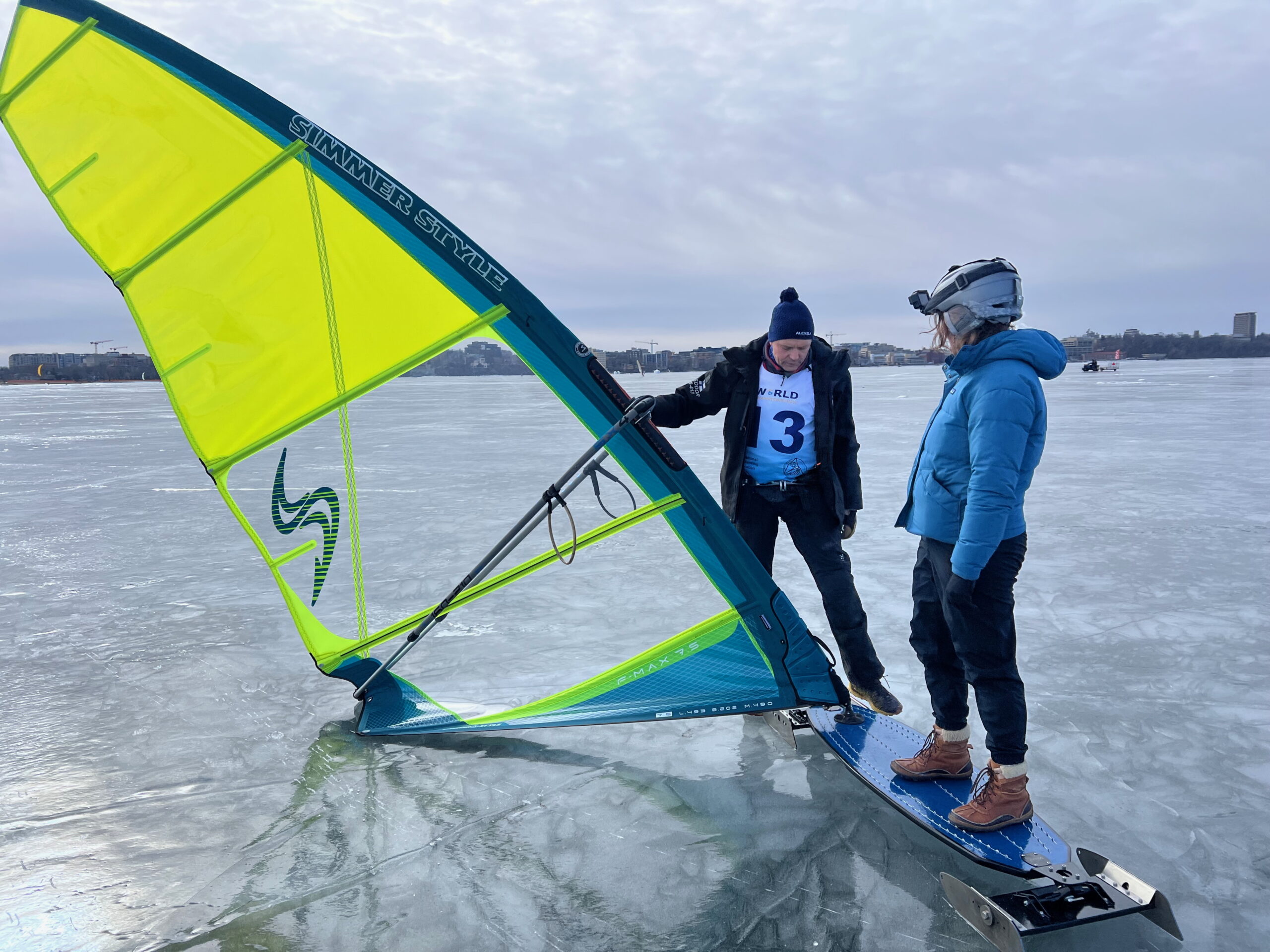
Hearing the elite athletes cheer on the recreational racers was more proof of how encouraging this community is to beginners. Two of the racers were sisters, only nine and ten years old, competing with wings and skates. They got an especially warm welcome at the finish line.
“Capture the girls finishing. This is just so incredible,” Feodor Gurvits said.
“Everyone is proud of you!” Marina Psychogyiou yelled among the cheers.
Those sisters and the other younger racers are the future of the sport. They might even get the chance to compete in the Winter Olympics someday. Psychogyiou says the International Kiteboarding Association is trying to make it happen by 2030.
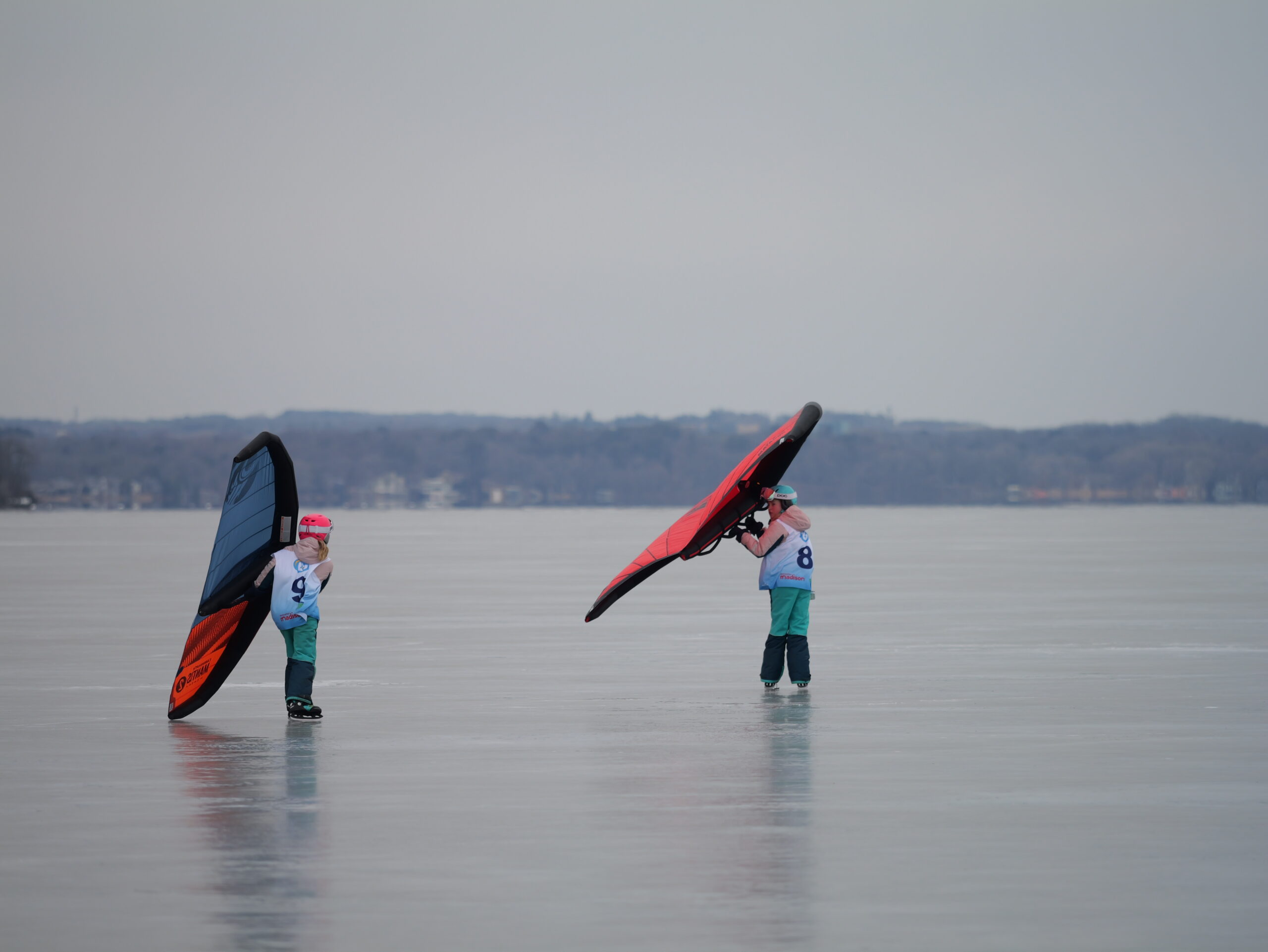
But at the Olympics, beginners can’t just walk out on the ice and get a crash course in the sport, like they can at the World Ice and Snow Sailing Championships.
“We had an opportunity to introduce our community to this crazy sport that we do,” Cohan said. “There’s lots of people saying, ‘Wow, this is pretty cool. Look at all these crazy kites and those wings and these sleds. I didn’t even know these recreation opportunities existed around here.’”
Many of the spectators I approached during the week said they would be interested in trying out the sport.
Bob Cook, owner of Kite Riders, LLC in Madison, was making it happen. He was out on the ice getting wings in people’s hands to try for themselves. In the past, he’s been quite successful — he introduced a number of the local athletes I met to the sport, including Steve Cohan. This event was no different.
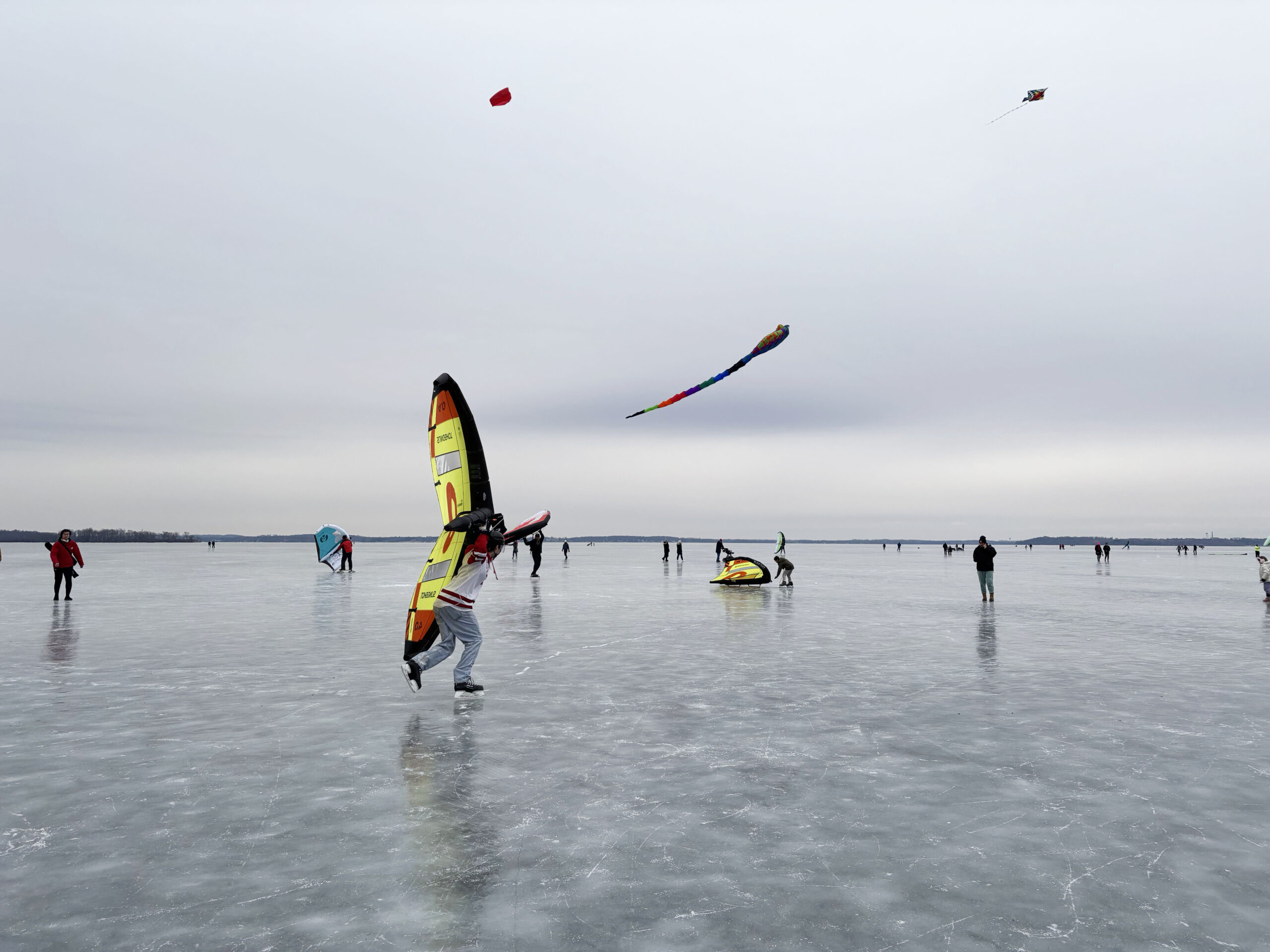
“We got way more people here than I thought we were going to today. I could use twice as many wings,” Cook said. “We’re getting some really good interest in it.”
After an event like the World Ice and Snow Sailing Championships, and a group of athletes so willing to pass on what they know, we might start seeing more people sailing around Wisconsin’s frozen lakes. Who knows? One of them might be me.
Wisconsin Public Radio, © Copyright 2025, Board of Regents of the University of Wisconsin System and Wisconsin Educational Communications Board.




